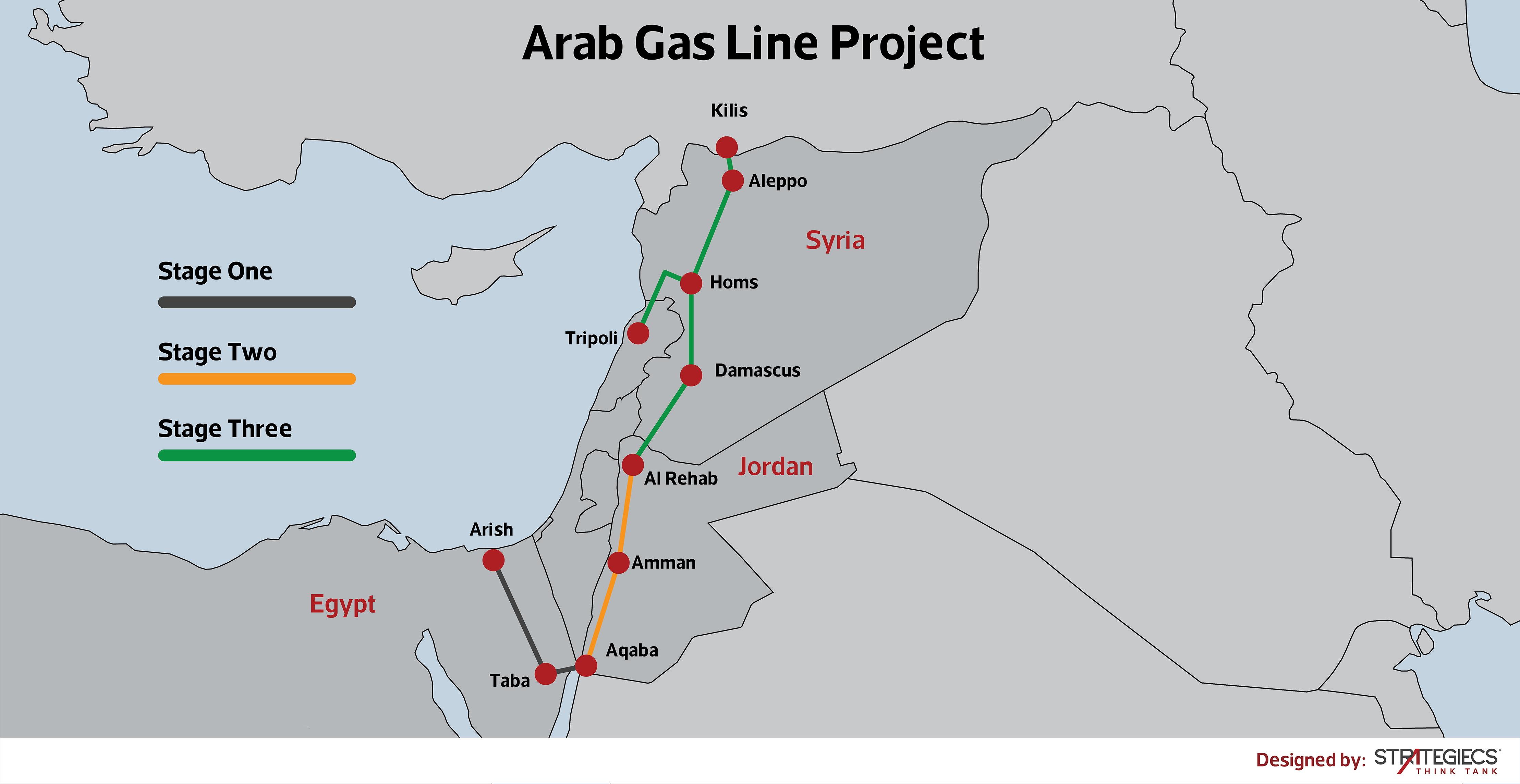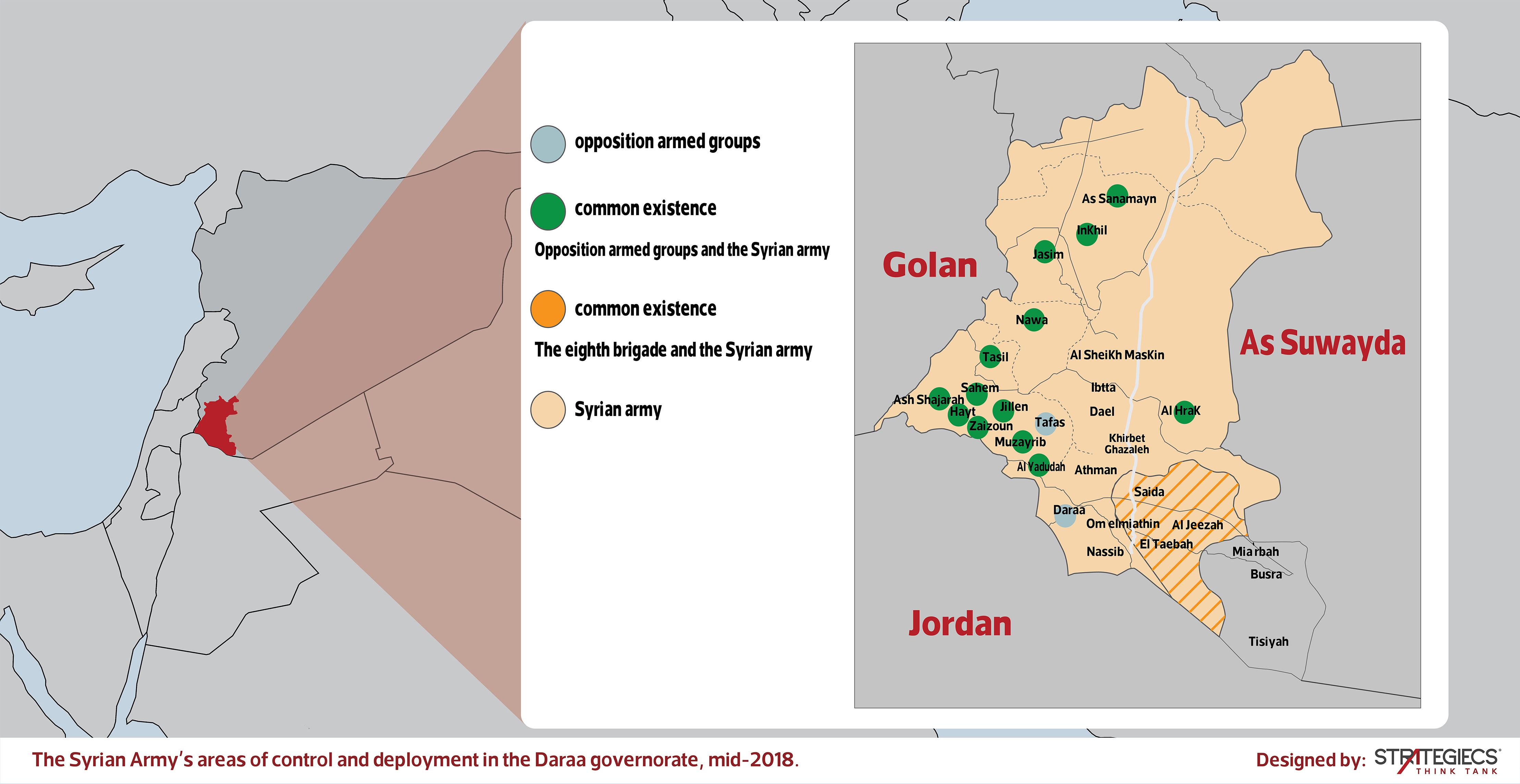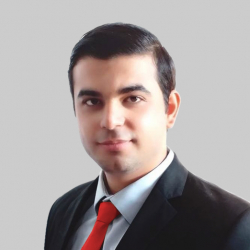* The opinions expressed in this study are those of the author. Strategiecs shall bear no responsibility for the views and/or opinion of its author on security, economic, social, and other issues, as they do not necessarily represent the views of the Think Tank.
The Jordanian Initiative: Opportunities to Establish Security in Southern Syria
Policy Analysis | This analysis examines Jordan’s efforts to mobilize international support and an Arab consensus to reach a political solution to the Syrian crisis. The aim is to reduce security threats along Jordan’s northern and eastern borders and strengthen the active Arab role in the Syrian crisis in the face of Iranian influence in the country.
by Dr. Jalal Selmi
- Release Date – Mar 13, 2023

Jordan is facing complex and confusing challenges on its northern and eastern borders with Syria, where cross-border drug smuggling gangs associated with Iranian-backed armed groups are active. This threat carries security and social dimensions that affect Jordan and the Gulf countries, underscoring the urgent need to reset the security equation in southern Syria in a way that establishes security on both sides of the border while eliminating the threats associated with the Iranian presence there. It won’t be easy. All attempts and paths to settle the Syrian crisis since 2011—in Geneva (2012, 2014, 2016, 2017), Vienna (2015), Astana (2017–2018, 2019, 2021), and Sochi (2018)—have failed.
Meanwhile, Jordan is seeking to present its political initiative for Syria and garner international and regional support to place it on the settlement table as a strategic solution. This move is driven by regional and international developments, with Russia shifting its priorities towards Ukraine and its interests in calming other involved fronts. Additionally, there’s a growing Arab and Turkish openness toward Damascus, particularly during the humanitarian response to the devastating earthquake that struck Syria and Turkey in February 2023. This is coupled with the possibility of Iran making concessions following its announcement to restore relations with Saudi Arabia as a result of both domestic and external pressures.
Although the details of the initiative mentioned by Jordan’s Foreign Minister Ayman Safadi in September 2022 on the sidelines of the 77th session of the United Nations General Assembly remains somewhat vague, Amman has indicated initial consensus with various Arab states, particularly Saudi Arabia. This is in addition to Egypt, Kuwait, Bahrain, and France at the international level.
The initiative focuses on its provisions concerning UN resolutions 2254 and 2642, aiming to revive dialogue between opposition forces and the state. It requires armed groups to surrender their military equipment from cities and neighborhoods in exchange for the release of political detainees held by the government.
The Jordanian Initiative Chances of Success
In particular, the Jordanian initiative provides the opportunity to establish an Arab strategic depth in southern Syria. Jordan will probably not hesitate to take the initiative, considering that the threat to its northern border is at its highest level, especially as Iran aims to practice pressure on Jordan. His Majesty King Abdullah II warned of the dangers of the Iranian armed groups presence in southern Syria close to the Jordanian border.
Sources indicate that Jordan sees an appropriate opportunity to submit a solution initiative regarding Syria on the international settlement table, especially since relations between Jordan and Syria have improved significantly. In addition are these four signs of hope for the initiative’s ultimate success.
Appropriate International Conditions
The international conditions seem appropriate for Jordan to put forward its initiative for a solution in Syria. The Ukrainian crisis showed the need to reduce the number of hotbeds of tension and escalation around the world. The regional and Arab environments are more sympathetic to Syria after the devastating earthquake that left the number of dead and lost civilians estimated at a billion. Some Arab foreign ministers visited Damascus—including Jordanian Foreign Minister Ayman Safadi, Egyptian Foreign Minister Shukri Sameh, and their Emirati counterpart Abdullah bin Zayed—and there are clear signs of an imminent restoration of relations between Syria and Turkey.
.jpg)
At the same time, Tehran seems more preoccupied with its internal circumstances: continued demonstrations and protests against the regime, albeit with less momentum than before; intensification of the international movement against Iran for providing support to Russia in its operations on Ukrainian territory; and being subjected to a number of unknown air strikes using drones, which affected Iran’s most fortified military sites in Isfahan.
Arab and International Leverage
Based on the Jordanian foreign minister’s speech, it seems that Amman is engaged in a great effort to seriously present the initiative to the international community, especially since France has shown interest in Arab issues and in the frameworks for resolving crises in the region. This was evidenced by France’s participation in the two sessions of the Baghdad conference during the past two years.
As for the United States, its preoccupation with the Ukrainian crisis and its strategic focus on building its presence in the Pacific to confront China’s growing expansion has forced the countries of the Middle East to provide solutions and settlements to regional crises and conflicts, a policy that Foreign Policy magazine called “delegated stabilization,” from which it is possible to understand the nature of the American position regarding the various Jordanian moves at the regional level.
Russian Interest
There is a Russian tendency to keep negotiations open with regional and international powers. Moscow realizes that solutions and settlements at the international level can only be achieved after the consensus of multiple powers and actors. There are Russian efforts to preserve its image as the mediator or guarantor state in Syria and not as a predator targeting the interests of regional countries.
The Russian-Iranian consensus on certain aspects of the Syrian file and Iran’s support for Russia in its military operations in Ukraine does not signify alignment on all issues. Rather, it is a policy based on the exchange of strategic interests. There are differences between Russia and Iran regarding southern Syria in particular. Russia seeks to prevent Iran from exploiting that region to exacerbate threats to neighboring countries. Moscow takes a supportive position on regional partnership projects, viewing them as a gateway to consolidate Damascus’ relations with regional states and as a means to rehabilitate Damascus’ image internationally. Meanwhile, Tehran is cautious about these projects, fearing that they may undermine its influence in the region.
Russia is also aware of Jordan’s equal ability, compared to other countries, to move an initiative and mobilize the necessary support from regional and international powers in Russia’s favor, so Moscow pays great attention to the Jordanian initiative.
An Opportunity for Economic Gains
The initiative coincides with Jordan’s quest to present a regional geoeconomic equation that may attract the Syrian government and Russia through economic projects of a strategic nature. Foremost is the quadripartite agreement to revive the Arab gas pipeline from Egypt, Jordan, Syria to Lebanon. In addition is the possibility of expanding the tripartite partnership between Amman, Cairo, and Baghdad to include joint projects with Damascus.

Damascus is also seeking to establish economic partnerships with Jordan in several sectors, especially industry and agriculture. As Syrian Minister of Industry Ziad Sabbagh stated during the Jordanian-Syrian Economic Forum in Damascus in October 2022: “The current global economic conditions necessitate the two countries to draw a road map, and reconsider the common economic reality, which is reflected on both sides through the establishment of industrial partnerships that achieve added value and high quality.”
Obstacles to the Implementation of the Jordanian Initiative and the Special Situation in Southern Syria
The equation in the southern Syrian region is highly intertwined and complex. The region includes the areas of Quneitra, Daraa, and Suwayda, each with its own specificity.
Quneitra, controlled by the Syrian army, is adjacent to the Golan Heights. In that area, Israel targets any attempts by Iranian-backed armed groups to advance.
In Daraa, Russia sponsored the reconciliation agreement between armed opposition groups and the Syrian government in 2018 that allowed the Syrian army to redeploy in large areas of Daraa while maintaining an isolated presence. And the armed opposition is limited to the al-Balad area of Daraa and the eastern and western countryside.
As for Suwayda area, it has its own calculations, as the government controls it with the presence of Iranian-backed and opposition armed groups. Sporadic clashes occur from time to time, but at a level far from zero clash.
Since 2011, and following the emergence of several armed opposition groups in the city of Daraa and after the state’s control over the administration in Daraa became weak, the Daraa province was divided between the control of armed groups, especially in border areas with Jordan and some areas deep in the province. However, after Moscow intervened in the crisis in 2015, that area became the subject of discussion and agreements on regional and international levels. This is due to its geopolitical and security sensitivity for both Israel and Jordan, as well as its impact on the security of states in the region and the interests of the United States.
Therefore, the security and geopolitical equation in southern Syria was formulated through two pillars.
- Taking into account Jordanian and Israeli interests, the most important is curbing the advance of Iranian-backed armed groups near the borders of both countries, either through Jordan’s adoption of diplomatic understandings and frameworks or through direct Israeli intervention with air strikes and missile bombardment on the strategic positions of these groups.
- The equation is not limited to Jordan and Israel political considerations. Other regional and international forces are involved. Arab and Gulf countries share Jordan’s interests in curbing the progress and influence of Iranian-backed armed groups, whose presence negatively contributed to cross-border drug smuggling operations. Russia, despite its approach being compatible with Jordan and other Arab countries on the negative impact and threat of Iranian armed groups there, periodically conducts joint patrols with the Syrian army and Iran, thus maintaining a pressure card that supports its negotiations with regional and international powers.
Perhaps the first compromise or solution efforts came with the launch of the fourth round of Astana talks in 2017. Its aim was to reach actual political settlements between the Syrian government and the opposition, with Russian, Turkish, and Iranian guarantees, according to which Daraa became part of the de-escalation zones.
Given the importance of the region for Jordan, Amman sought to start from the de-escalation agreement and turn it into an agreement that protects its security and interests on the border with Syria. This was done on November 11, 2017, by concluding an agreement with Moscow and Washington on the sidelines of the G20 summit in the German city of Hamburg. The main axis of the agreement was to pave the way for a settlement solution by opening the Jaber-Naseeb crossing in exchange for ensuring that Iranian-backed armed groups remain 70 km away from Jordan’s northern border.
However, there was a fundamental change in the map of control over Daraa after June 2018. That was when the Syrian army began a major military campaign to control the entire governorate and was able to regain control over large swathes of it, either through fighting or in negotiations sponsored by Russia. The campaign came to an end as the majority of armed factions in Daraa accepted to resolve the settlement at the end of July 2018. The agreement stipulated deporting those who rejected the Russian settlement and handing over control of all areas of the Daraa to the control of the Syrian government. However, the settlement was not fully implemented. The influence in Daraa was divided, as shown on the map below.

The map demonstrates that some neighborhoods, specifically in downtown Daraa and the western countryside of the city, are still under the control of opposition factions, who are rejecting the Russian settlement. The areas in the eastern countryside of the city are under the control of the Eighth Brigade, which is part of the Fifth Corps affiliated with Russia. The presence of the Syrian army in the areas controlled by the armed opposition is limited to service institutions and security forces, such as conducting military checkpoints on the main roads connecting villages and towns in southern Syria.
What is new after 2018 is that despite the understandings between international and regional parties regarding the removal of Iranian-backed armed groups from the Jordanian and Israeli borders, Iran’s influence has increased in southern Syria. This is evident by the active presence of the Iranian Revolutionary Guard and its armed groups, such as Hezbollah and others, in numerous towns and villages, including Qarafa, Khirbet Ghazala, and Busra al-Sham.
There are accusations against Moscow that it turns a blind eye to the Iranian expansion— military, economic, and political—conducted through its Revolutionary Guards and the Lebanese Hezbollah, making both groups a strong card in any negotiation process with regional powers.
With Russia turning a blind eye and U.S. interest in the region in decline under the Trump administration, Jordan decided to reactivate trade with Syria, which was roughly $615 million in 2010, and, in October 2018, reopened the Jaber-Naseeb crossing between its border and Syria three years after it had closed it down in April 2015. In addition, Jordan sought through this initiative to activate a direct line of communication between Moscow and Damascus, especially in light of the decline of American interest and Amman’s desire to revive the negotiation track with the Kremlin after Moscow directly negotiated with the armed opposition factions in the city of Daraa.
However, the official Syrian position on the initiative remains unclear, especially in Daraa and the southern regions, where the Syrian government wants to implement the “zero solution”—in which there shall be no armed force outside the framework of the government’s control—by restoring the Syrian army’s full control over Daraa and neutralizing the influence of the armed opposition.
In June 2021, the Syrian government announced its intention to carry out a large-scale military operation to gain control of the western countryside of Daraa if a certain number of wanted militants were not released into their custody. Moscow intervened again through mediation, guaranteeing a new agreement in July 2021 that provides for: the handover of individual weapons; the expansion of military points of the Syrian army inside the neighborhoods of downtown Daraa; and settling the situation of armed opposition members in Daraa.
The agreement led the armed opposition in Daraa to believe that the government’s goal, by the terms of this agreement, is based on the zero solution: no armed force outside the framework of the government’s control. Clashes erupted again, before a new settlement was concluded in September 2021, according to which Russian military police forces escorted by the Eighth Brigade will enter downtown Daraa.
For its part, Tehran supports the Syrian government’s approach to consolidating its influence in that region and raising the level of geopolitical and security threats against Israel, Jordan, and the Gulf states. The balance of threats Tehran seeks to create in more than one hot geographical enclave is preponderantly in its favor, enabling Iran to raise the level of its encircled influence in the Gulf region.
However, the balance of power equation in the region does not serve such an endeavor, especially in light of Russia’s interest in a strategic settlement and the proposed Jordanian initiative supported by American and European officials. Ignoring all of that with a “zero equation” means facing consequences that may hurt Damascus’ efforts to establish openness and trust with Arab or international entities.
There is a realization in Russia that the application of this zero equation means turning the region into a hotbed for Iranian influence, remaining in a status of instability that will ensure neighboring countries live with never-ending tensions and threats. This is especially true regarding Jordan and Israel, as well as the United States, which has many legal tools to impose sanctions on Syria, the latest of which was the anti-Captagon Act.
This is why Russia does not leave the doors open to the growing Iranian influence in southern Syria. Instead, it seeks to restore Damascus’ relations with the countries of the region and the world while limiting the Iranian influence in a way that does not affect the track of international settlement that guarantees a permanent equation of stability in Syria.

Dr. Jalal Selmi
specializes in regional and geopolitical equations in the Middle East
 العربية
العربية